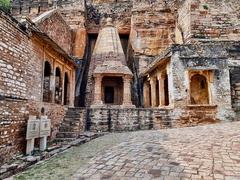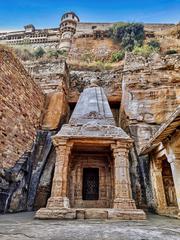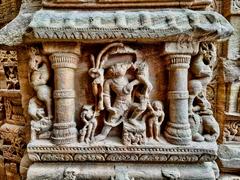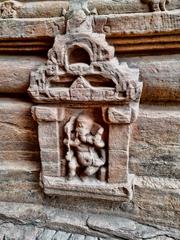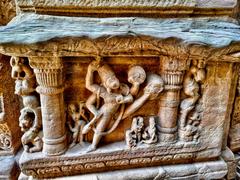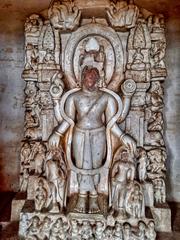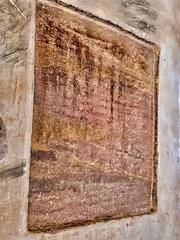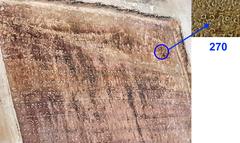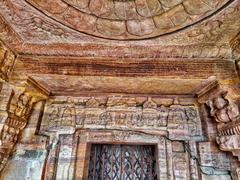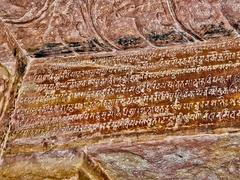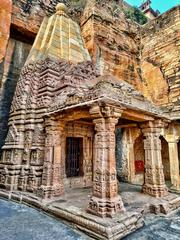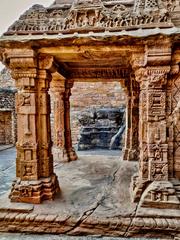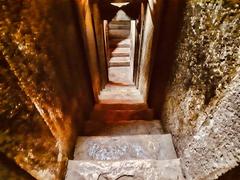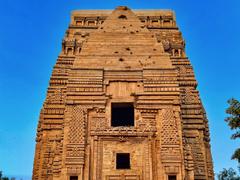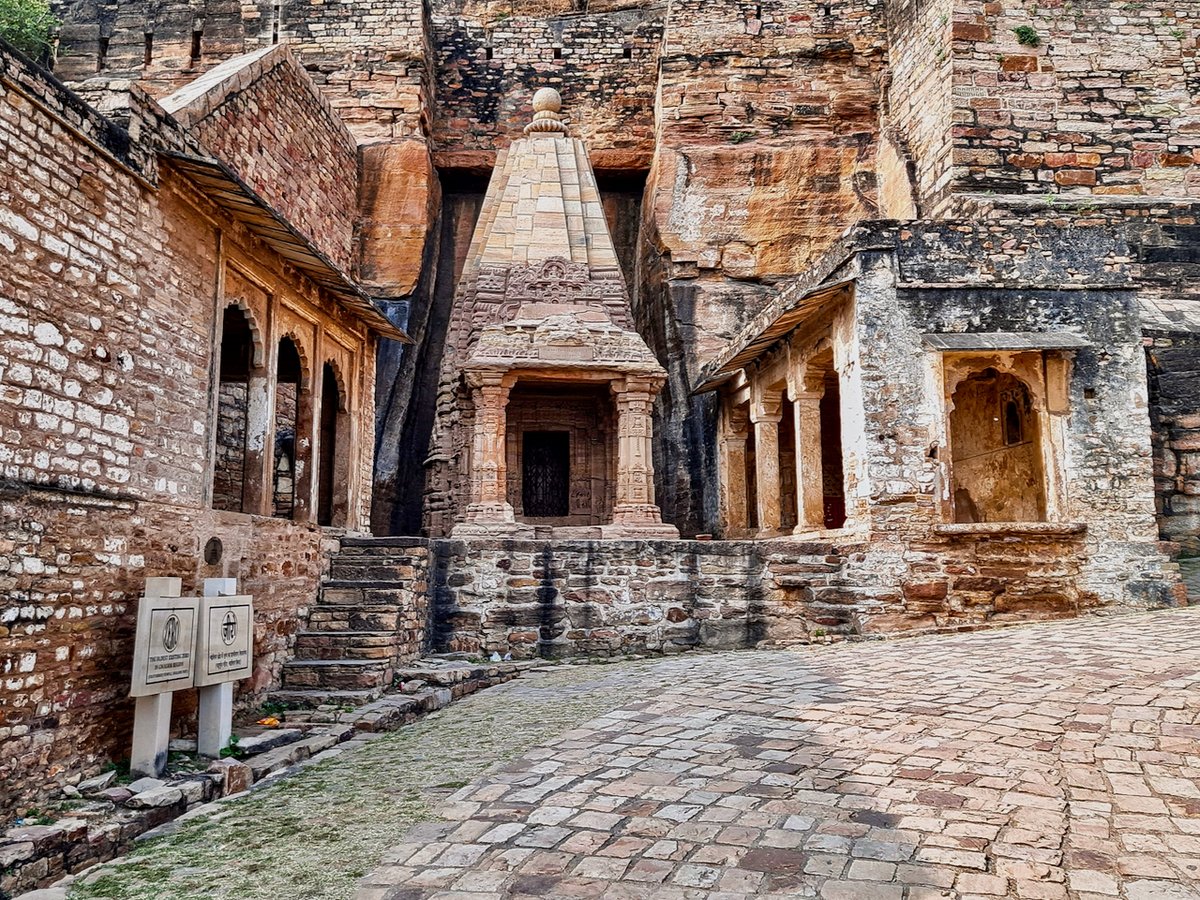
Comprehensive Guide to Visiting the Gwalior Fort, Gwalior, India
Date: 01/08/2024
Introduction
Gwalior, situated in the heart of India, is a city that marries ancient heritage with modern charm. Known for its historical and architectural significance, Gwalior offers a unique blend of cultural richness and historical depth. The city’s roots trace back to the 8th century, linked to the sage Gwalipa, who is said to have cured the chieftain Suraj Sen of leprosy. This marked the beginning of Gwalior’s illustrious history, which has seen the influence of various dynasties such as the Kachchhapaghatas, Tomars, Mughals, Marathas, and the British (Indian Visit).
Among the city’s most prominent landmarks is the Gwalior Fort, often referred to as the ‘Gibraltar of India,’ which stands as a testament to the city’s strategic importance and architectural grandeur. The fort, along with other monuments like the Man Singh Palace and Gujari Mahal, showcases a blend of Rajput, Mughal, and Jain architectural styles (Culture and Heritage). The city’s vibrant cultural and musical heritage, notably associated with the legendary musician Tansen, further enriches its historical tapestry. Gwalior’s modern developments and tourism infrastructure make it an accessible and captivating destination for travelers worldwide. This comprehensive guide aims to delve into the city’s history, visitor information, major attractions, and practical tips to ensure a memorable visit to Gwalior.
Table of Contents
- Introduction
- History and Significance of Gwalior
- Visitor Information
- Cultural and Musical Heritage
- British Influence and Modern Developments
- Major Tourist Attractions
- Recent Tourism Trends
- Visitor Tips
- Transportation Options
- FAQ
- Conclusion
Exploring Gwalior: History, Visitor Information, and Top Attractions
History and Significance of Gwalior
Ancient Origins and Early History
Gwalior’s history traces back to the 8th century, with its name linked to the sage Gwalipa, who cured the chieftain Suraj Sen of leprosy. This event marked the beginning of Gwalior’s storied past, which has seen the rise and fall of numerous dynasties. The Gwalior Fort, perched atop Gopachal Parvat, stands as a testament to the city’s ancient heritage and strategic importance.
Dynastic Rule and Architectural Marvels
Over the centuries, Gwalior has been ruled by various dynasties, each leaving its mark on the city’s cultural and architectural landscape. The Kachchhapaghatas, Tomars, Mughals, Marathas, and the British have all contributed to Gwalior’s rich history. The Gwalior Fort, known as the ‘Gibraltar of India,’ showcases a blend of Rajput, Mughal, and Jain architectural styles. Its massive gateways, intricate carvings, and ornate palaces are a sight to behold.
One of the most remarkable structures within the fort is the Man Singh Palace, known for its stunning blue-tiled exterior. This palace, built by Raja Man Singh Tomar, exemplifies the grandeur of the Tomar dynasty. Another significant structure is the Gujari Mahal, built by Raja Man Singh for his beloved wife, Mrignayani. Today, it houses an archaeological museum displaying artifacts, sculptures, and relics from the region’s rich history.
Visitor Information
Visiting Hours and Tickets
- Gwalior Fort: Open daily from 6:00 AM to 5:30 PM. Entry tickets cost INR 75 for Indian citizens and INR 250 for foreign tourists.
- Jai Vilas Palace: Open daily from 10:00 AM to 5:00 PM. Entry tickets cost INR 150 for adults and INR 100 for children.
- Gujari Mahal Archaeological Museum: Open daily from 10:00 AM to 5:00 PM. Entry tickets cost INR 10 for Indian citizens and INR 100 for foreign tourists.
Accessibility
Most major attractions in Gwalior are accessible by public transport, auto-rickshaws, and ride-hailing services like Ola and Uber. The city also offers facilities for differently-abled visitors at key tourist sites.
Cultural and Musical Heritage
Gwalior is renowned for its vibrant cultural and musical heritage. The city is closely associated with the legendary musician Tansen, one of the nine gems in the court of Emperor Akbar. The Tansen Music Festival, held annually in December, pays homage to this great musician with classical music performances that attract artists and enthusiasts from around the country.
British Influence and Modern Developments
The British era brought significant changes to Gwalior, including the establishment of the Indian Railways, which increased the city’s accessibility and fueled tourism growth. The Gwalior Trade Fair, started in 1905, further highlighted the city’s economic and tourism potential. Post-independence, the Government of India recognized Gwalior’s tourism potential and implemented various initiatives to preserve its monuments and promote cultural tourism.
Major Tourist Attractions
Gwalior is home to several historical and cultural landmarks that attract tourists from around the world. Some must-visit sites include:
- Gwalior Fort: This imposing structure offers an expansive view of the city and is a silent witness to the rise and fall of empires.
- Jai Vilas Palace: A stunning palace that now serves as a museum, showcasing the opulence of the Scindia dynasty.
- Sas Bahu Temples: These twin temples dedicated to Lord Vishnu are known for their intricate carvings and exquisite architecture.
- Teli Ka Mandir: An ancient temple dedicated to Lord Vishnu, showcasing a unique blend of North Indian and South Indian architectural elements.
- Gujari Mahal Archaeological Museum: This museum houses an impressive collection of artifacts, sculptures, and relics from the region’s rich history.
- Tansen Tomb: A historical monument dedicated to the legendary musician Tansen.
- Sun Temple Gwalior: A cultural and heritage site that attracts visitors for its architectural beauty.
Recent Tourism Trends
In recent years, Gwalior has experienced growth in tourism, thanks to improved infrastructure and heightened global interest in historical destinations. Efforts to enhance the tourist experience include technologies for virtual tours and interactive showcases at monuments. The city has embraced cultural events such as the Tansen Music Festival, which attracts visitors globally. Eco-tourism is also a growing trend, with visitors seeking a combination of history and nature at places like the Gwalior Zoo and Madhav National Park.
Visitor Tips
For those planning a trip to Gwalior, here are some essential tips to ensure a memorable experience:
- Best Time to Visit: The most suitable time to visit Gwalior is between October and March when the weather is pleasant. The Tansen Music Festival in November-December is a highlight.
- Respect Local Customs: Dress modestly, remove your shoes when entering temples or homes, and use your right hand when eating or giving/receiving something.
- Bargain at Markets: Haggling is a way of life in Indian markets, so be prepared to negotiate prices.
- Stay Hydrated: Drink plenty of water and avoid dehydration, especially during the hot summer months.
- Try Local Cuisine: Gwalior offers a range of delicious local dishes, from spicy curries to sweet desserts. Don’t miss out on specialties like Gwalior Kachori and Bhutte Ka Kees.
- Learn Some Hindi Phrases: Show respect for the local culture by learning basic Hindi phrases like ‘Namaste’ (hello), ‘Dhanyavad’ (thank you), and ‘Chalo’ (let’s go).
Transportation Options
Gwalior is well-connected by various modes of transportation, making it easily accessible for tourists:
- By Air: The city has its own airport, with regular flights connecting it to major cities in India.
- By Rail: Gwalior is a major railway junction, with trains connecting it to various parts of the country.
- By Road: Regular bus services connect Gwalior to nearby cities and towns. Auto-rickshaws and ride-hailing apps like Ola and Uber are available for short distances.
- Walking Tours: Explore the city’s historic core on foot, taking in the sights and sounds of this vibrant city.
FAQ
Q: What are the visiting hours for Gwalior Fort? A: Gwalior Fort is open daily from 6:00 AM to 5:30 PM.
Q: How much do tickets cost for Jai Vilas Palace? A: Entry tickets for Jai Vilas Palace cost INR 150 for adults and INR 100 for children.
Q: When is the best time to visit Gwalior? A: The best time to visit Gwalior is between October and March when the weather is pleasant.
Q: What is the Tansen Music Festival? A: The Tansen Music Festival is an annual event held in December, featuring classical music performances in honor of the legendary musician Tansen.
Q: Are there any special tips for visiting Gwalior? A: Yes, respect local customs, stay hydrated, try local cuisine, and learn some basic Hindi phrases to enhance your experience.
Call to Action
Ready to explore the rich history and cultural heritage of Gwalior? Download the Audiala app for a personalized tour guide experience, check out related posts on our website, and follow us on social media for the latest updates and travel tips!
Conclusion
Gwalior stands as a beacon of India’s rich historical and cultural heritage. The city’s myriad attractions, from the imposing Gwalior Fort to the serene Sun Temple, offer a glimpse into its storied past and architectural brilliance. The annual Tansen Music Festival highlights Gwalior’s musical legacy, drawing artists and enthusiasts from far and wide (Indian Visit).
The city’s accessibility, with well-connected air, rail, and road networks, coupled with its visitor-friendly amenities, ensures a comfortable and enriching experience. Whether exploring the ancient carvings of the Sas Bahu Temples or the historical exhibits in the Gujari Mahal Archaeological Museum, visitors are treated to a journey through time. Gwalior’s recent tourism trends, including eco-tourism and virtual tours, underscore its evolving appeal as a historical destination (Travel Setu).
For those planning a trip, the best time to visit is between October and March when the weather is pleasant. Respecting local customs, staying hydrated, and trying local cuisine like Gwalior Kachori and Bhutte Ka Kees will enhance the travel experience. As Gwalior continues to preserve its heritage and embrace modern tourism, it remains a must-visit destination for history buffs and cultural enthusiasts alike. Ready to explore Gwalior’s rich history and cultural heritage? Download the Audiala app for a personalized tour guide experience, check out related posts on our website, and follow us on social media for the latest updates and travel tips.
References
- Indian Visit, 2024, source url
- Culture and Heritage, 2024, source url
- Travel Setu, 2024, source url
